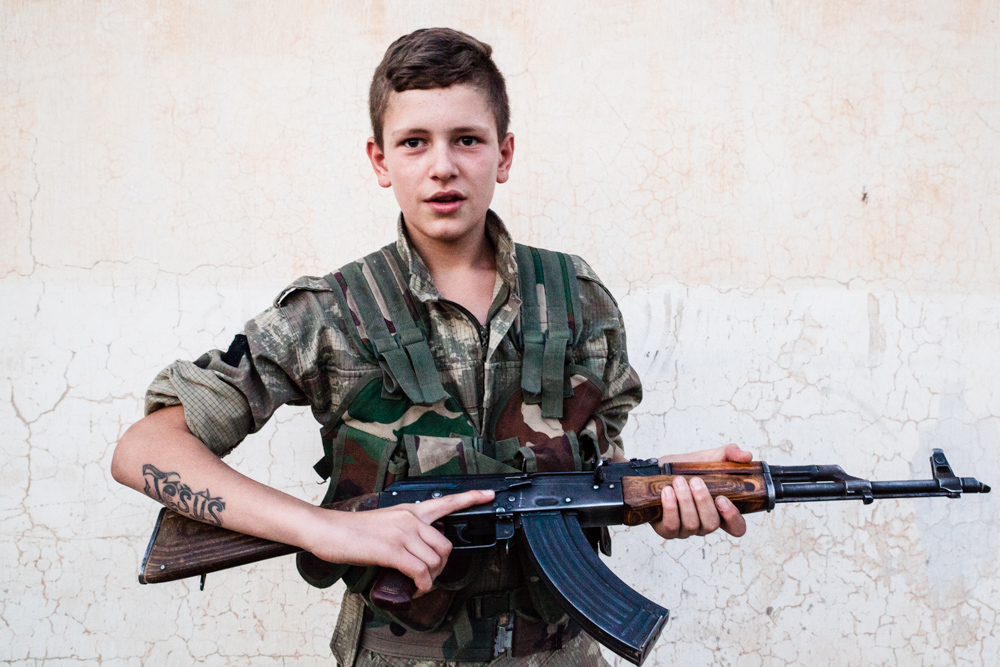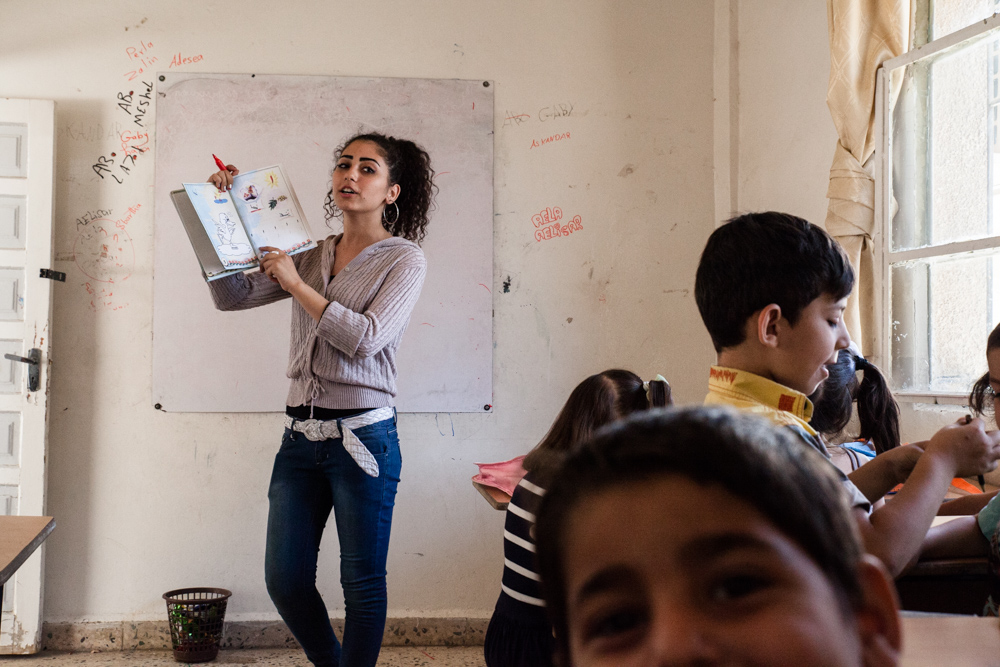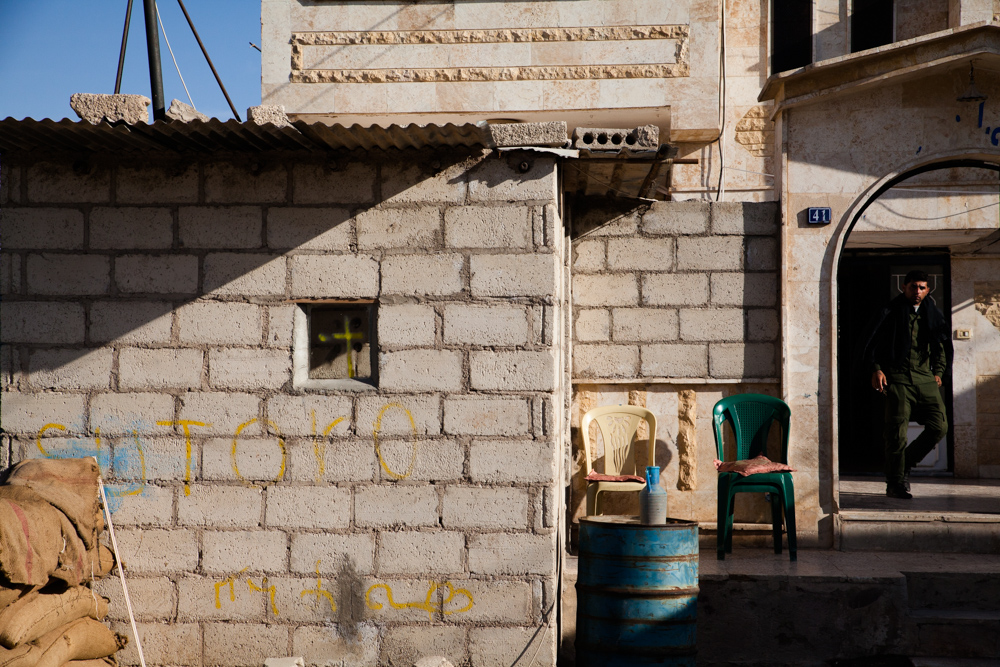











































Tirbespiye’s Syriac
2014The Syriac community of Syria is probably thousands of years old. This branch of the Christian religion is proud to use the same language than the Christ when he was speaking to people. The syriac language is a branch of the Aramean, and gave birth later to the arabic language. The Syriac community is splitted in two branches : the catholic church and the orthodox church.
Upon the times, the syriac community became smaller and smaller, especially after a lot of conversion to Islam when the new religion started to rise in the region. The beginning of the 20th century saw a genocide ordered by the new turkish republic against armenian and syriacs. Later, in Syria, the regime let them have their cult and keep their language, as long as it wasn’t too obvious and as they don't get involve into politics and claim for more rights. The priest were used to spread regime’s word in the christian population, and as a community the group had no rights.
Then came the revolution in Syria, and the community’s population decreased even more. A lot of christians, afraid of persecutions by islamists groups or gangs choose to flee outside.
The one who remain are now living in fear, tight to each other.
But in the kurdish area, it was also the occasion for the syriacs to take part in the autonomy process started by the kurdish self established local administration, in order to claim the rights of the community. Describing itself as an ethnic group, and not as a religious group, some members of the community choose to take part in the new local administration established by kurdish people in the kurdish areas of Syria. For example, in the canton of Jezireh, north east from Syria, the vice president of the administration is a syriac women, and syriacs have 15 over 78 parlemantaries to express their community’s point of view. Since then, the administration implemented the teaching of syriac language in the towns where there is a syriac community. This was done before only in the church, so the teachers moved from the church to the school. Of course this is not recognized by the regime of Bashar el Assad, and the syriac teacher are not paid by the regime like other teachers.
In the small town of Tirbespiyeh (Gabara Heworye in syriac, meaning "White grief"), thousand years old syriac community organised its own defense by creating a militia acting as a police, the Sutoro, and an army branch, the Syriac army council. Both are working in collaboration with the kurdish armed forces, to fight the Islamic State on their borders and to provide security to the population inside. Despite the fear of the community – it took a lot of time to be able to take pictures with them, some of its members see the upcoming time as a chance for them to rise and find again the role they had in the society in the past.
Upon the times, the syriac community became smaller and smaller, especially after a lot of conversion to Islam when the new religion started to rise in the region. The beginning of the 20th century saw a genocide ordered by the new turkish republic against armenian and syriacs. Later, in Syria, the regime let them have their cult and keep their language, as long as it wasn’t too obvious and as they don't get involve into politics and claim for more rights. The priest were used to spread regime’s word in the christian population, and as a community the group had no rights.
Then came the revolution in Syria, and the community’s population decreased even more. A lot of christians, afraid of persecutions by islamists groups or gangs choose to flee outside.
The one who remain are now living in fear, tight to each other.
But in the kurdish area, it was also the occasion for the syriacs to take part in the autonomy process started by the kurdish self established local administration, in order to claim the rights of the community. Describing itself as an ethnic group, and not as a religious group, some members of the community choose to take part in the new local administration established by kurdish people in the kurdish areas of Syria. For example, in the canton of Jezireh, north east from Syria, the vice president of the administration is a syriac women, and syriacs have 15 over 78 parlemantaries to express their community’s point of view. Since then, the administration implemented the teaching of syriac language in the towns where there is a syriac community. This was done before only in the church, so the teachers moved from the church to the school. Of course this is not recognized by the regime of Bashar el Assad, and the syriac teacher are not paid by the regime like other teachers.
In the small town of Tirbespiyeh (Gabara Heworye in syriac, meaning "White grief"), thousand years old syriac community organised its own defense by creating a militia acting as a police, the Sutoro, and an army branch, the Syriac army council. Both are working in collaboration with the kurdish armed forces, to fight the Islamic State on their borders and to provide security to the population inside. Despite the fear of the community – it took a lot of time to be able to take pictures with them, some of its members see the upcoming time as a chance for them to rise and find again the role they had in the society in the past.